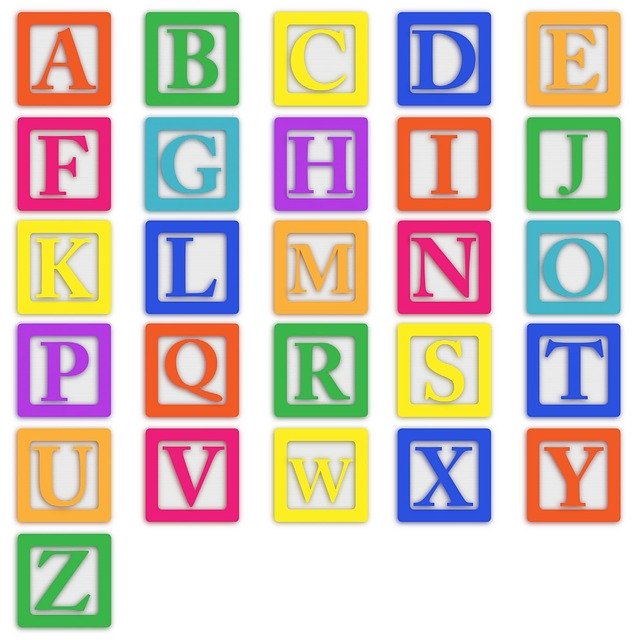10 Simple Word Games You Can Play with a Magnetic Alphabet



You need to learn new sound patterns, new rules of grammar, and sometimes you even have to learn a new alphabet to boot. Of all of my ESL students over the years, the majority have been from eastern Asia and the Middle East. And whether they were speakers of Korean, Chinese, Japanese or Arabic, they all had to learn a new alphabet at the start of their English studies. For these students and others like them, learning the English alphabet is often the very first step to learning the language and achieving fluency. And for your beginning students just learning how to use the English alphabet, here are some fun games to help teach and review the alphabet in your class.

Memory style matching games are easy to make and fun to use. Even older ESL students will be challenged as they review letters of the alphabet while putting their memories to the test. To make a game like this, you can make a set of matching cards using index cards. Simply write each capital letter on one card and its lower case letter on the other card. Turn all the cards over and arrange them on a desk. Students must find both the capital and lowercase letter to make a match. Or make the game more challenging for your students and add a vocabulary element. Have students match an alphabet letter to a picture that starts with that letter. If you feel like getting seasonal and a bit crafty, have students match ice-cream scoops to cones, butterflies to flowers, or cars to tires labeled with corresponding letters and words.
Send your students on a hunt as they review the alphabet and general vocabulary. Arrange 26 pieces of paper around your classroom or in another large area. Then, challenge students to find as many items that begin with each of those letters as possible. When a student finds an item, he should place it on the piece of paper labeled with its initial letter. Your “m” paper may hold items like a marker, marble, milk and magnets. See if your students can find items in your classroom for every letter of the alphabet. Then send students home to make a list of items in their houses that start with each of the 26 letters. To extend the activity, have pairs of students take all the objects on a given piece of paper and put them in alphabetical order.

Give your students a set of simple pictures (think clip art style) that begin with different letters of the alphabet. Have students work with a partner and a set of Scrabble tiles to match a tile to each picture. This tile should have the same initial letter as the word for each of the pictures. (You can find Scrabble sets on sale around the holidays. If you purchase one game for every two or three students in your classroom, you can use the games and its pieces for several language learning activities throughout the year.)
Give your students an empty bingo board, and have them fill each of the 25 squares with a small picture. Using clip art or drawing skills (even if it’s only stick figures), each student should put a picture in each square that begins with a different letter of the alphabet. You can then write the letters of the alphabet on ping pong balls or small slips of paper. Pull a letter and have students mark any picture that begins with that letter. When someone gets five in a row, he calls Bingo! If you want to challenge their phonic skills, announce the sound of the letter rather than the letter itself and play for a winner.
Do you want to get your students moving while you review letters of the alphabet? Write the 26 letters of the alphabet in random order on a plain shower curtain. Then give each student a turn tossing a bean bag on to the curtain. Whatever letter her beanbag lands nearest, she must name and give a word that starts with that letter. If a student gets stuck, let her classmates suggest answers.
To give your students practice writing out the letters in the English language, set up a writing center in your classroom. Use a shallow box (a cereal box with one large side removed is perfect, but any box will work) and fill it with about an inch of salt, sand or a similar item. Then make a set of cards that show each letter in detail. When students are at the center, they can use a stick or the back of a paintbrush to practice writing letters in the sand tray using the card as a reference. After finishing one letter, students can smooth out the surface of the sand and practice another.
Recycle that old floral foam with this fun exercise. After collecting or purchasing a sheet of foam for each of your students, write the letters of the alphabet in random places on the foam. (You can include both capital and lowercase letters.) Give each student his foam sheet, a small mallet, stick or other pounding instrument and several wooden golf tees. To review the letters, announce a letter, its initial sound or a word that begins with that letter. Students should find the correct letter on their foam and pound a golf tee into the foam to cover it. Your students will have fun making a physical connection as you review the English alphabet in an unusual and creative way.
Get a foam alphabet puzzle and assemble it in a large space in your classroom. Put letters in random order, but limit the layout of the puzzle to four across. Students then take turns hopping through the alphabet board. Have students either name the letter, its sound or a word that begins with that letter before hopping on to a given square. Students can choose which squares they step on, but their goal is to work from one end of the puzzle to the other end. Give each student at least one turn hopping through the alphabet.

Using a simple inflatable beach ball, make a fun game for your students to play anytime you have a few minutes to fill during class. Write the letters of the alphabet in random places on the beach ball. Arrange your students in a circle. One student tosses the ball to a classmate, and that person catches it. Whatever letter is closest to his right thumb she must name. If you like, have her name a word that starts with that letter as well. Play until everyone has at least one turn.
Turn arts and craft time into an opportunity to review English letters. Have students cut colorful drinking straws into one inch segments. Then give each person a ball of play dough. Students should flatten the play dough on their desks and then poke the straws into the play dough. They should arrange the straw segments so they look like a letter when viewed from above. You can announce the letters you want students to make, have them make the letters of their name or have students assign letters to each other. Once a letter is complete, students remove the straws, smooth out the play dough and then make another letter.